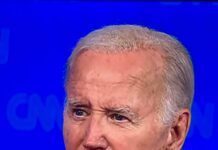“Y’all don’t do that again.” Eighth grader Hannah Frost looked up in surprise. It was her Honey Grove Middle School principal, Mr. Frost, walking toward the table where she and a few classmates were standing. One of their friends had been in a car crash, and they’d gone to an empty corner of the lunchroom to pray. If they wanted to keep this up, he told them the next day, they’d better move behind a curtain, meet alone outside, or hide out in the gym. Hannah was stunned. Since when did it become a problem to pray together, she wondered? Since never, attorneys said.
“The right to pray is constitutionally protected activity,” First Liberty Institute fired back. By exiling Hannah and the other students, the group insisted to the school, Principal Frost was sending a message that prayer is “illegitimate, disfavored, and should not occur in public… Even Establishment Clause concerns cannot justify such treatment.” To its credit, Honey Grove came around — responding immediately that the middle schoolers could pray.
Hannah’s story had a happy ending, but not every one does. In a lot of districts, school officials are either ignorant about student speech or outright hostile to prayer, but in too many instances, kids have been taught that expressions of faith aren’t welcome. That changes today, President Trump insisted. To celebrate Religious Freedom Day, the administration is rolling out a new set of rules aimed at protecting kids like Honey Grove’s. “President Trump is committed to making sure that people of faith, particularly children, are not subjected to illegal punishment or pressure for exercising their constitutionally protected rights,” White House Domestic Policy Council Director Joe Grogan explained.
Believe it or not, this kind of federal guidance is supposed to be updated every couple of years — and yet, almost two decades have gone by, and no president has. So, this morning, for the first time since 2003, districts across America are about to get a lesson in students’ rights. And to ensure that schools are listening, local agencies will have to promise to abide by the law before they get a cent of federal funds.
For years, we’ve watched secularists pressure school administrators into telling students that they can’t pray, read their Bibles, or talk about their faith in class. Now, the tables are turned. For once, the onus isn’t on kids or districts to defend their freedoms — it’s on states to certify that they’re compliant and respectful of these basic rights. Thanks to President Trump, the government is finally standing up to schoolyard bullies who make a living trying to intimidate and silence students.
And the Trump administration didn’t stop there. In the push to put the “freedom” back in Religious Freedom Day, the president’s team released a string of announcements across the government agencies — rules that promote everything from the fair and equal treatment of faith-based groups to ending the discrimination of religious nonprofits in federal grants.
“From its opening pages,” the president insisted, “the story of America has been rooted in the truth that all men and women are endowed with the right to follow their conscience, worship freely, and live in accordance with their convictions. On Religious Freedom Day, we honor the foundational link between freedom and faith in our country and reaffirm our commitment to safeguarding the religious liberty of all Americans.”
Original story here.
















